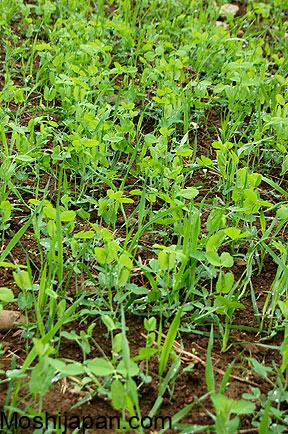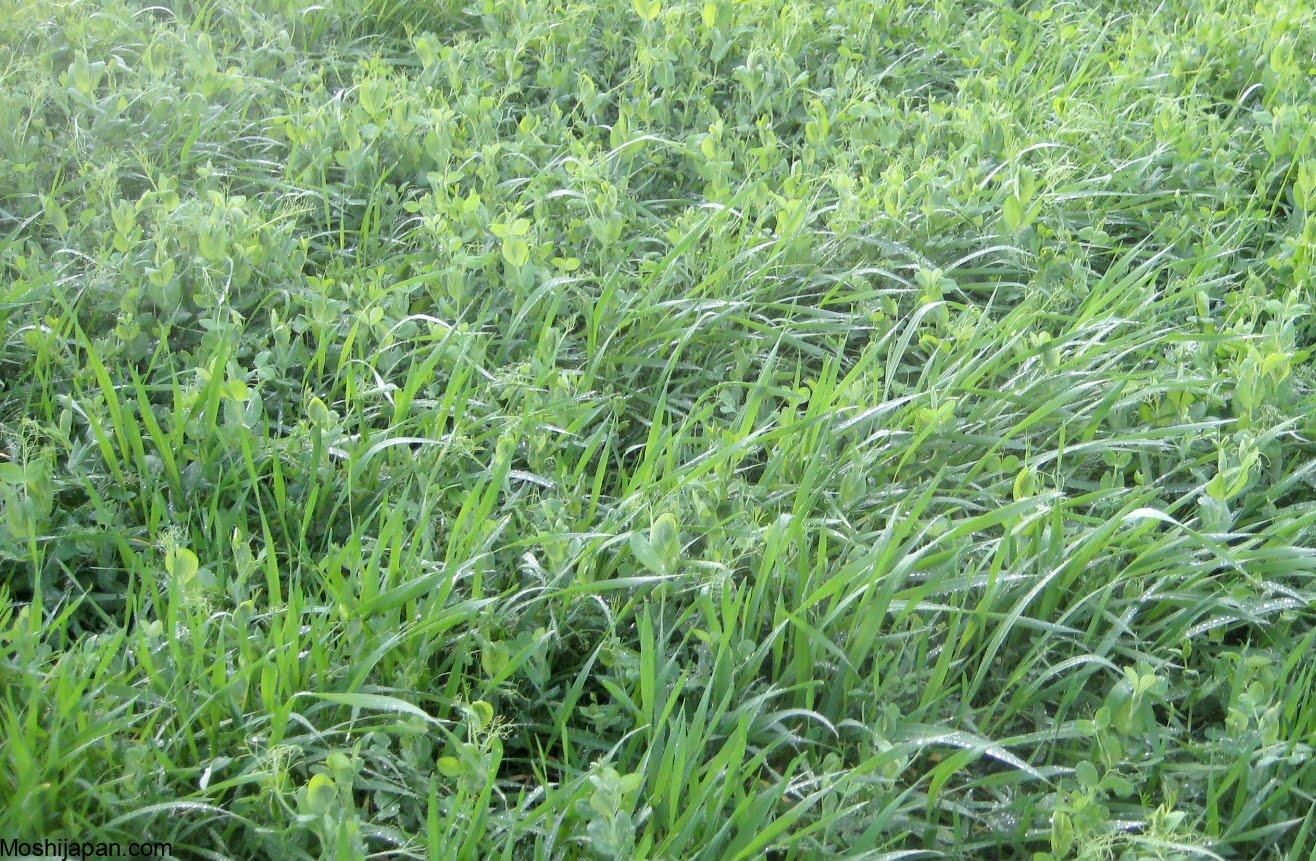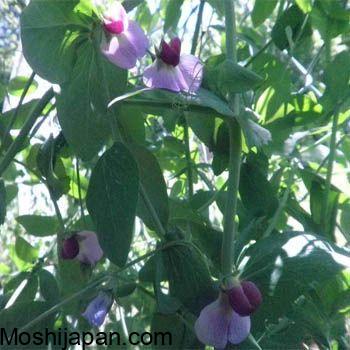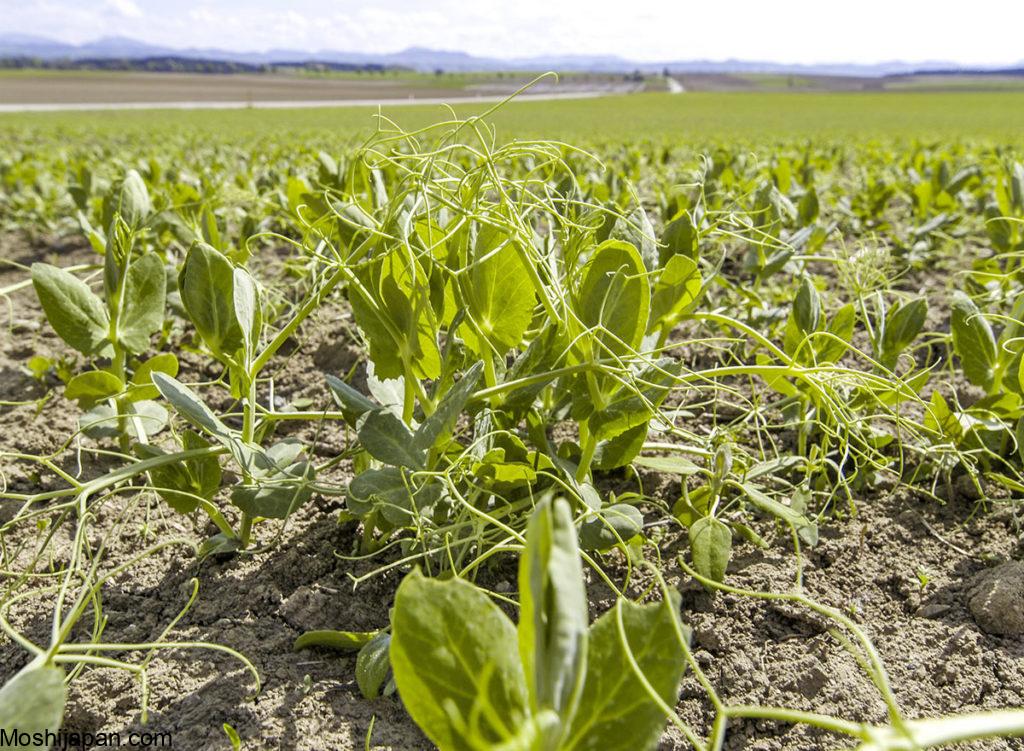Cover Cropping the Easy Way: How to Grow Austrian Winter Peas to Enrich Your Soil
In today’s article, we are going to delve into the world of cover cropping, specifically focusing on a fantastic choice for enriching your soil – Austrian Winter Peas. These versatile legumes have gained popularity among experienced farmers and gardeners due to their soil-improving qualities. If you’re looking to boost your soil’s fertility, reduce erosion, and provide a natural source of nitrogen, this is the ultimate guide for you. Let’s explore how to grow Austrian Winter Peas effectively and enhance your soil’s health.
Introduction to Austrian Winter Peas

Austrian Winter Peas, also known as Pisum sativum subsp. arvense, are a cool-season cover crop that belongs to the legume family. They are an exceptional choice for those looking to enhance soil fertility in an eco-friendly and sustainable way. These peas are sown in the late summer or early fall, and they grow throughout the winter, providing numerous benefits to your soil.
One of the key advantages of Austrian Winter Peas is their ability to fix atmospheric nitrogen, making it available to other plants in the soil. This natural nitrogen source is an eco-conscious alternative to synthetic fertilizers. Additionally, their dense root system helps prevent soil erosion, making them a valuable addition to your crop rotation.
Choosing the Right Spot

Selecting the right location for planting Austrian Winter Peas is crucial for their success. They thrive in well-drained soil with a slightly acidic to neutral pH. Make sure the chosen area receives full sun or at least partial sunlight for optimal growth. It’s essential to prepare the soil by removing any weeds, rocks, or debris before planting.
Planting Austrian Winter Peas

Timing
Planting Austrian Winter Peas at the correct time is essential. The best time to sow these peas is in late summer or early fall, about 8 to 12 weeks before your region’s first expected frost date. This timing allows them to establish strong roots before the winter cold sets in.
Sowing Method
You can sow Austrian Winter Peas by broadcasting the seeds evenly over the prepared soil. Aim to plant them at a depth of about 1 to 2 inches. It’s a good practice to sow them along with a grass cover crop, as the combination can provide a balanced source of organic matter and nitrogen.
Care and Maintenance

Austrian Winter Peas are relatively low-maintenance, but there are a few steps to follow to ensure their successful growth and soil-enriching benefits.
Watering
Watering your peas is essential, especially during dry spells. Keep the soil consistently moist but avoid waterlogging, as excessive moisture can lead to disease and root rot.
Weed Control
Regularly monitor your pea crop for weeds. Weeds can compete with the peas for nutrients, water, and sunlight, so it’s essential to keep the area weed-free.
No Fertilizer Needed
One of the remarkable qualities of Austrian Winter Peas is their ability to fix nitrogen from the air into the soil. This means you can skip the nitrogen-based fertilizers, reducing the environmental impact of your gardening practices.
The Benefits of Austrian Winter Peas

Austrian Winter Peas offer a multitude of benefits to your soil and garden. Let’s explore some of the advantages:
Natural Nitrogen Fixation
As mentioned earlier, these peas have the incredible ability to fix atmospheric nitrogen into the soil. This enriches the soil with a valuable nutrient that is essential for plant growth. By planting Austrian Winter Peas, you reduce the need for synthetic nitrogen fertilizers, contributing to a more sustainable and eco-friendly gardening approach.
Erosion Control
The dense root system of Austrian Winter Peas helps bind the soil together, preventing erosion caused by wind and water. This is especially beneficial if you have sloping or hilly terrain on your property. The peas act as a natural barrier against soil loss.
Organic Matter
As the peas grow and eventually die off in the spring, they add organic matter to the soil. This organic matter improves soil structure, enhances water retention, and provides a nutrient-rich environment for other plants in your garden.
Weed Suppression
Austrian Winter Peas can outcompete weeds, reducing the need for herbicides and manual weeding. Their vigorous growth chokes out unwanted plants, leaving your garden looking clean and well-maintained.
Improved Crop Rotation
Including Austrian Winter Peas in your crop rotation plan can break pest and disease cycles. Their presence can deter certain soil-borne pests and diseases, improving the overall health of your garden.
How to Incorporate Austrian Winter Peas into Your Garden
There are several ways to integrate Austrian Winter Peas into your gardening practices:
Crop Rotation
As part of a crop rotation plan, plant Austrian Winter Peas in fields or garden beds after crops that have higher nutrient requirements, such as tomatoes or corn. This helps replenish the soil with essential nutrients and improves its overall health.
Green Manure
Austrian Winter Peas can also be used as a green manure crop. About four to six weeks before you plan to plant your main crop, mow down the mature pea plants. This green manure can be tilled into the soil, providing a nutrient boost for your upcoming crops.
Cover Cropping
Planting Austrian Winter Peas as a cover crop between rows of your main crops can help control weeds and enrich the soil during the growing season. You can allow the peas to grow alongside your primary crops, taking advantage of their nitrogen-fixing abilities.
Harvesting Austrian Winter Peas
Austrian Winter Peas can serve multiple purposes in your garden, and you can harvest them at different stages depending on your goals:
Green Manure
If you’re using Austrian Winter Peas as a green manure crop, mow them down when they reach a height of about 12 to 18 inches. Allow the cut vegetation to decompose for a few weeks before planting your main crops.
Forage or Animal Feed
Austrian Winter Peas are also an excellent forage option for livestock. You can allow your animals to graze on the growing pea plants, providing them with a nutritious food source.
Seed Production
If you’re interested in seed production, allow the peas to grow until they produce mature seeds. Harvest the pods when they are fully mature, then dry and store the seeds for future planting.
FAQ: Your Questions Answered
Q1. Are Austrian Winter Peas suitable for all climates?
Austrian Winter Peas thrive in cool-season climates. While they can tolerate cold temperatures, they may not do well in extremely hot and arid regions.
Q2. Can I plant Austrian Winter Peas in the spring?
It’s best to plant them in late summer or early fall to take advantage of their ability to grow during the winter.
Q3. Do I need to inoculate the pea seeds?
Inoculating the seeds with a pea-specific rhizobium bacteria can enhance nitrogen fixation. It’s a good practice but not always necessary.
Q4. How do I prepare the soil for Austrian Winter Peas?
Clear the area of weeds, rocks, and debris, and ensure the soil is well-drained with a slightly acidic to neutral pH.
Q5. Can I eat Austrian Winter Peas like regular peas?
While they are edible, Austrian Winter Pe
as are typically harvested at a later stage when their pods have matured and their seeds have hardened. These peas are not commonly consumed like garden peas but are more often used for animal forage, green manure, or seed production.
Q6. Can I use Austrian Winter Peas in a no-till farming system?
Yes, Austrian Winter Peas can be incorporated into no-till farming practices, as they are beneficial for improving soil health and reducing the need for synthetic fertilizers.
Q7. How do I prevent disease in Austrian Winter Peas?
To reduce the risk of disease, ensure proper spacing between plants to promote air circulation and use disease-resistant pea varieties when available.
Q8. When is the best time to mow down Austrian Winter Peas for green manure?
Mow down the pea plants when they reach a height of about 12 to 18 inches. Allow the cut vegetation to decompose for a few weeks before planting your main crops.
Q9. Can I interplant Austrian Winter Peas with other crops?
Yes, you can interplant them with other crops to take advantage of their nitrogen-fixing abilities and soil-improving properties. However, make sure they are compatible with the chosen companion plants.
Q10. Do Austrian Winter Peas attract pests and insects?
While they can attract some pests, their advantages often outweigh any potential pest issues. The dense growth of Austrian Winter Peas can act as a natural deterrent to certain pests.
Conclusion
Austrian Winter Peas are a fantastic choice for those looking to improve soil fertility, prevent erosion, and reduce their environmental impact in gardening and farming practices. These cool-season legumes are versatile and have a multitude of benefits, including natural nitrogen fixation and organic matter addition to the soil. Whether you’re a seasoned gardener or a farmer looking to enhance your crop rotation, Austrian Winter Peas can be a valuable addition to your soil management strategy.
By following the tips and guidelines in this article, you can grow Austrian Winter Peas successfully and enjoy the rewards of healthier, more fertile soil. Incorporating them into your gardening practices can lead to better crop yields, reduced need for synthetic fertilizers, and a more sustainable and eco-friendly approach to agriculture.
So, get ready to embrace Austrian Winter Peas and watch your soil thrive with improved fertility and reduced erosion. Your garden or farm will thank you, and you’ll contribute to a more environmentally conscious and sustainable way of growing crops.
tag
- chicken feed
- how to Keep Chickens Off Your Porch
- How to grow oyster mushrooms at home
- Growing Kale in Pots



0 Comments